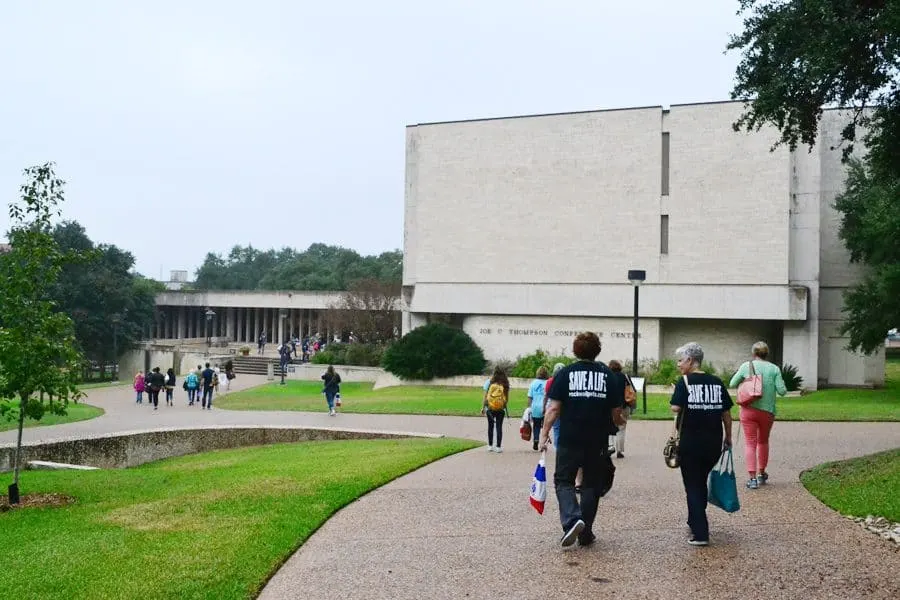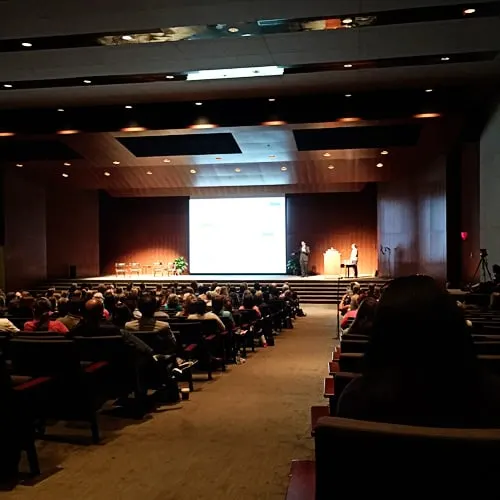Rachael Ray Nutrish has sponsored this post, but all opinions are my own.
Whenever I mention that Austin, Texas is my hometown, the response is just about always overwhelmingly positive. People love Austin for its music scene, fun vibe, great food, and scenic Hill Country setting.
But I’m most proud of my community for another reason: its no-kill status. In 2010, Austin became a no-kill city, the largest in the nation. Today the city has a 96% save rate, euthanizing animals only when needed as a last resort to relieve pain and suffering.
The route that Austin took to no-kill status is one that many other communities would like to follow–and one that with work and community support is achievable. To help shelters and communities work toward becoming no-kill, Austin Pets Alive! (from whom we have adopted twice: our cats Lucky and Ochi) organizes the annual American Pets Alive, a no-kill conference. My attendance at the conference this past weekend was sponsored by Nutrish; you’ll recall that a portion of Nutrish proceeds go to Rachael’s Rescue®, which was created to help animals in need. To date, over $14 million has been donated. This money has gone toward food, medical supplies and treatments for these unfortunate animals.

The theme of the annual conference is making America no-kill. While today this movement continues to gain momentum, at first, recalls Dr. Ellen Jefferson, Executive Director of Austin Pets Alive!, “everyone thought it couldn’t be done.” Opposition reasons ranged from the argument that there are too many animals and not enough homes to the reluctance to divert money away from spay and neuter efforts.
The Austin Pets Alive model is one that brought the capital city from about a 50% save rate to its current 96%, achieved by focusing efforts on the animal populations that are not being saved. “If you are trying to stop death in the shelter, you have to focus on the shelter and the pets who are dying,” explained Jefferson.
These efforts brought about a model that worked in Austin using techniques including:
- focusing on the euthanasia list
- leveraging community support
- setting up key programs to help pets most at risk: a puppy ICU, a kitten neonatal program, a ringworm program, medical triage, large dog behavior and adoption program
 One issue that Austin tackled–and that many other communities continue to face–is the idea “that shelter pets should be perfect or be dead,” said Jefferson. While high turnover adoptions help move a large percentage of adoptables into homes, Austin Pets Alive has a different target. “We focus on what is left over and building the missing safety net around them.”
One issue that Austin tackled–and that many other communities continue to face–is the idea “that shelter pets should be perfect or be dead,” said Jefferson. While high turnover adoptions help move a large percentage of adoptables into homes, Austin Pets Alive has a different target. “We focus on what is left over and building the missing safety net around them.”
That role is an important one in the road to no-kill, a route that Jefferson explained involves three components:
- animal control to protect and serve the public
- high turnover/low cost easy adoptions
- a safety net for less adoptable animals such as Austin Pets Alive
Ryan Clinton, founder of Fix Austin, also outlined some of the most important steps to implementing a no-kill plan including:
- off-site adoptions
- a large scale foster program
- behavioral rehabilitation
- intake counseling
- a community cat TNR program
- low-cost spay/neuter
- providing the euthanasia list to local rescues
- public awareness
- increase return of lost pets to owners
- a moratorium on empty cages
Clinton explained that “No kill is love. It’s only been about 100 years since we decided the right thing to do was to kill animals. We can flip this on its head.”
During the conference, I attended sessions that ranged from helping ringworm cats (watch for a post on CatTipper about this topic which is personally very important to me since our Ochi was adopted from the ringworm ward) to teaching large dogs Canine Good Citizen skills to make them more adoptable.
I attended one session on Austin Pets Alive’s P.A.S.S. Program–Positive Alternative to Shelter Surrender–on ways to get creative and help owners keep their pets rather than surrendering them, whether that involves a fundraiser to pay an apartment pet deposit or marketing a pet on social media to help rehome a pet directly rather than via the shelter.
The efforts of other shelters were spotlighted as well including the Herculean effort by the animal control officer in the small town of Kirby, Texas, near San Antonio, which went from a 4% save rate to no kill! When Christie Banduch took over the shelter in 2010, the few visitors the shelter received were met by a freezer full of deceased animals–topped by an air freshener–in the lobby. Today the shelter saves 93% of its animals.
The move to no kill is one that both Austin and Kirby achieved in just a few years. It’s an effort that we can all join in, whether as volunteers, adopters, donors, voters, or influencers when talking with neighbors and co-workers. And, when we make our personal travel plans with our pets, we can choose no-kill cities to visit as often as possible. In addition to rewarding those cities with our business, we also know that if our pets should become lost while we’re visiting, they will be safe in shelters as they await to be reunited with us.
However long the job takes, it is one that can be done. As Dr. Jefferson explained, “It is our job not to give up.”
Many thanks to Nutrish for sponsoring my attendance at American Pets Alive–and for the millions of dollars in support Nutrish, Rachael’s Rescue, and Rachael Ray provide homeless animals. For more on Nutrish, be sure to follow the Nutrish social channels:
- Twitter: http://twitter.com/nutrish
- Facebook: http://facebook.com/nutrish and/or http://facebook.com/nutrishforcats
- Instagram: http://instagram.com/nutrish
- Who are the Top Pet Influencers and Should Your Dog Join In the Fun? - April 10, 2024
- Should Dogs Sleep on the Bed? - April 9, 2024
- 10 Spring Cleaning Tasks for Dog Homes - April 9, 2024

